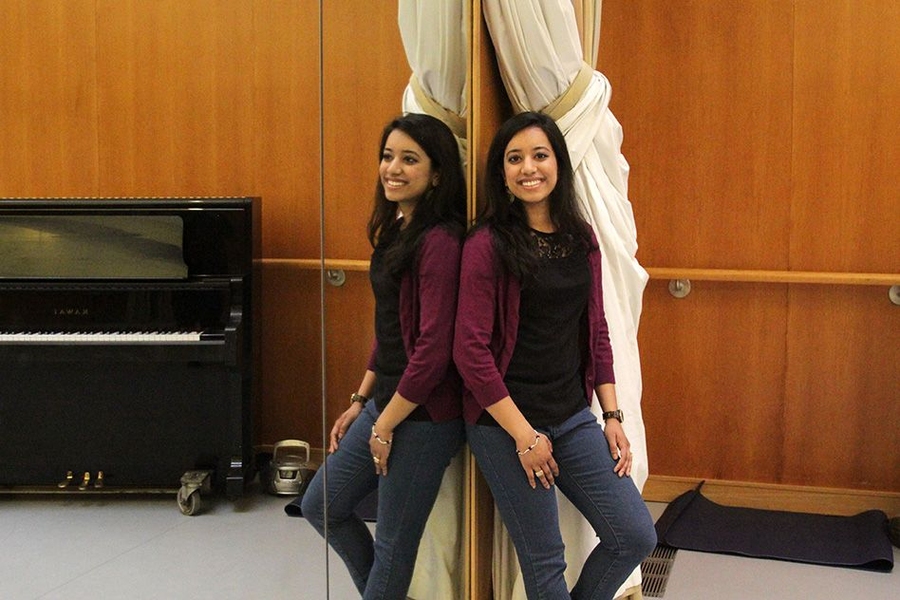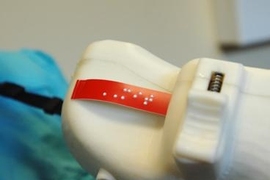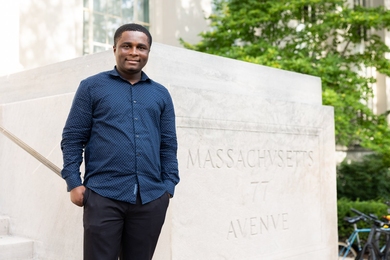For as long as she can remember, MIT senior Priyanka Saha has been fascinated by the complex workings of life.
“When I was really little, maybe 4, I remember visiting the science museum and coming home with my prized souvenir, which was a children’s book on the human body,” Saha, a biology major, says with a smile.
Saha’s early interest grew into a love of science, particularly of biology. She threw herself into research in high school, and set her sights on medical school. For college, she expected to stay near home, in Seattle.
“MIT came as a huge surprise,” Saha says. When she visited for Campus Preview Weekend, though, she knew it was where she wanted to be. “The energy here, seeing how diverse people’s interests were, yet also how amazingly talented and driven everyone here is — that just drew me in instantly.”
Once at the Institute, Saha jumped into campus life — playing viola with the MIT Symphony Orchestra, performing with a classical Indian dance group, and doing outreach with the Society of Women Engineers — and into biology research, with a focus on medical engineering applications. As a freshman, she began doing research in the lab of Institute Professor Robert Langer, a chemical engineer, and later in the lab of Darrell Irvine, a professor of materials science and engineering and of biological engineering, exploring the use of nanoparticles in drug delivery. Most recently, she conducted research in the lab of Elazer Edelman, the Thomas D. and Virginia W. Cabot Professor of Health Sciences and Technology at MIT, on stents — tiny mesh frames used to open up clogged arteries.
Saha was drawn to the idea of designing devices — from the nanoscale to the macroscale — that help the human body fulfill its natural functions. “In bioengineering, we’re trying to replicate what’s already in nature,” Saha says. “We’re only just scratching the surface in understanding how all of it works. That’s the most fascinating thing for me.”
Engineering independence
For Saha, this concept — engineering ways to replicate natural functions that go awry in the body — was powerful. Her sister, Rima, was diagnosed with cerebral palsy at age 2, five years before Saha was born. At the time, Saha’s parents — a mechanical engineer and a homemaker — lived in Kolkata, India, but in pursuit of treatment and surgery for Rima, they immigrated to the United States. Growing up, Saha learned to be there to hold her sister’s hand, support her as she walked, and do other simple gestures, like carrying her plate to the dinner table.
“I think one of the big things I’ve learned from her is, disability isn’t just biological, and it isn’t just medical,” Saha says. “It really affects someone’s entire life, and also the people around them.”
But Saha also saw how powerful technology can be: When she was in seventh grade, her sister went off to college with the assistance of a motorized wheelchair, eventually graduating with a double major. So when Saha saw the opportunity at MIT to help people with disabilities live more independently, she didn’t hesitate.
In her sophomore year, Saha met a fellow student named Srikanth Bolla. Bolla, who had been born blind, had founded an organization called Samanvai in his native India; its mission was to provide support for children with disabilities, giving them the skills to one day live and work independently.
“I just found this idea to be so powerful after seeing my sister struggle through school,” Saha says. “I think today the biggest challenge for her is employment, being independent and breaking away from depending on family.” Saha began volunteering for Samanvai in her spare time, helping to write grant applications and fundraise.
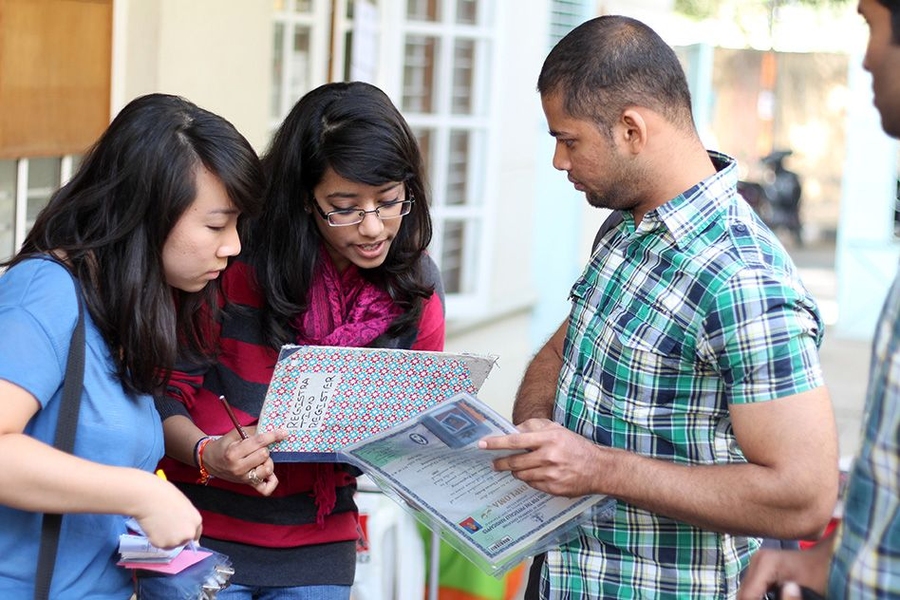
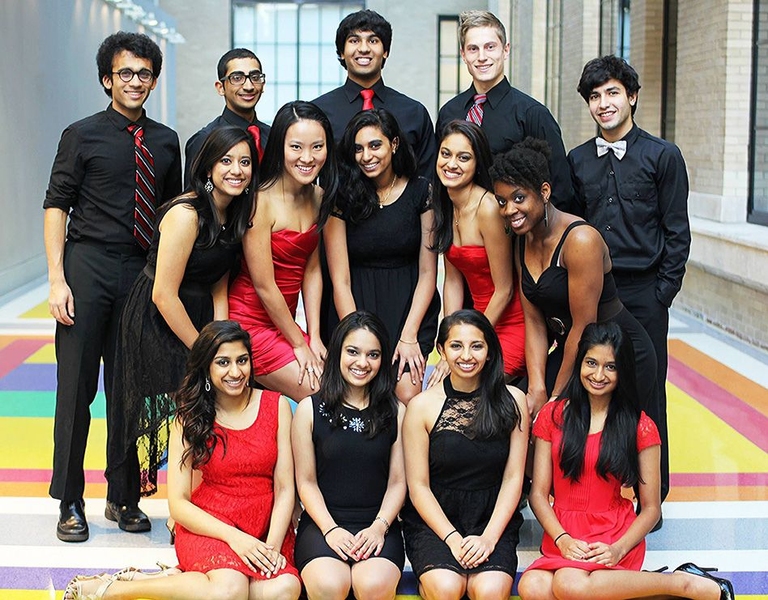
When she heard about an MIT class in which students actually build assistive technologies for people with disabilities, Saha jumped at the opportunity. The course was 6.811 (Principles and Practice of Assistive Technology), also known as PPAT, taught by professor of computer science and engineering Seth Teller.
At the core of PPAT is the idea that technology can give people with disabilities potential that might have been unthinkable a few decades ago. For people who can’t use conventional keyboards, there are joystick or head-tracker typing programs; for blind people who can’t read labels, there’s an affordable Braille labeling device. Saha’s client in PPAT, a blind and hearing-impaired woman, was working toward a law degree. Saha and her project partner built their client a vibrating bracelet to alert her when her cellphone rings.
“[PPAT] was probably one of the best classes I’ve taken here,” Saha says. “It was just very empowering for everyone involved — for our client, but also for me because I was learning all these new things.”
Looking back, and looking forward
In January 2013, after completing PPAT, Saha’s passion for assistive technology took her back to the country that her parents had left 25 years earlier. Saha has stayed in touch with her Indian roots — at MIT, she has danced in an Indian classical dance group; co-founded a Bollywood dance group, MIT Mirchi; and sings with a South Asian a cappella group, the MIT Ohms — but has rarely had the chance to return to India. With the generous support of the MIT Public Service Center, Saha and a classmate, Angela Ma, traveled to Bangalore to work with an organization called EnAble India.
“[I’ve] hoped [for a long time] to do something to give back to the place my parents left to build a brighter future for my sister, to make India a better place for people like my sister,” Saha wrote in her first blog post of her month in Bangalore. “I’ve finally been given the opportunity to do so.”
In India, Saha and Ma designed an online career portal for EnAble India’s clients — people with disabilities who seek employment and independent living. With the addition of online career services, these people would be able to find jobs more easily.
While in Bangalore, Saha’s time outside of work was packed with lessons in sign language, visits to schools for children with disabilities, and presentations on technologies she learned in PPAT. The presentations always turned into exciting discussions and brainstorm sessions with EnAble India staff members, who were hearing about the technologies for the first time.
By the time Saha left India at the end of that month, she was conversing in sign language, typing in Braille, and was more inspired than ever to continue working on assistive technology.
But as Saha has learned, the challenges of disability multiply for people who can’t afford treatment and technology. As a volunteer with the national organization Health Leads USA, Saha works with low-income patients at Boston Medical Center who struggle to meet their basic needs.
“Seeing how much of an impact disability has on low-income people has been really eye-opening,” Saha says. “I’ve started to think about all these things — how assistive technology or medicine can help people in those situations, and how we can make more affordable and more impactful solutions for people who are at the crossroads of two very hard situations.”
After she graduates from MIT in June, Saha will attend Harvard Medical School; eventually, she hopes to work with patients from disadvantaged backgrounds, particularly people affected by disabilities.
“I think medicine and technology can bring those innovations that are going to make people with disabilities employable and independent,” she says. “My dream for the future is to see a world where being disabled doesn’t stop you from achieving your dreams and being where you want to be.”
